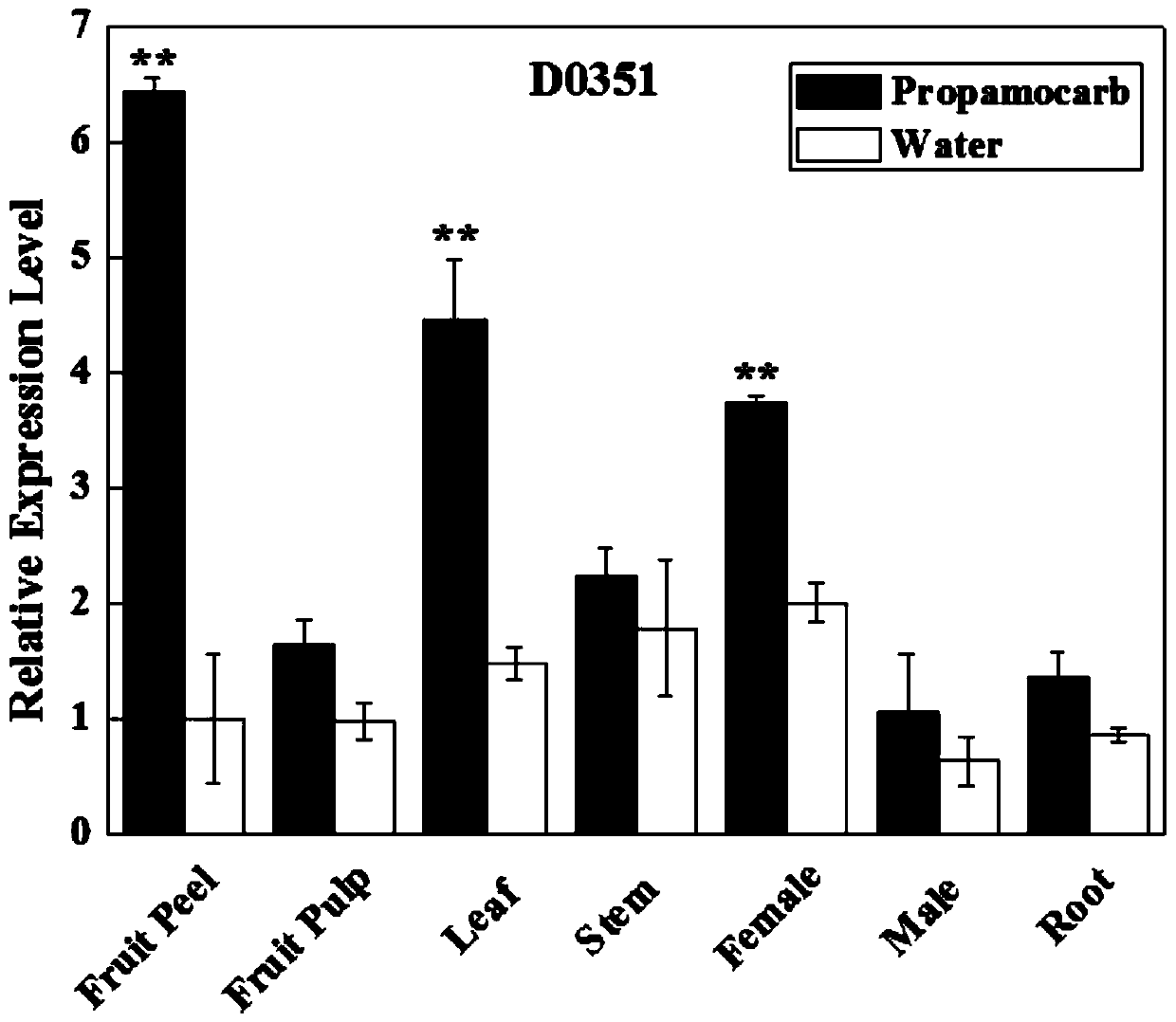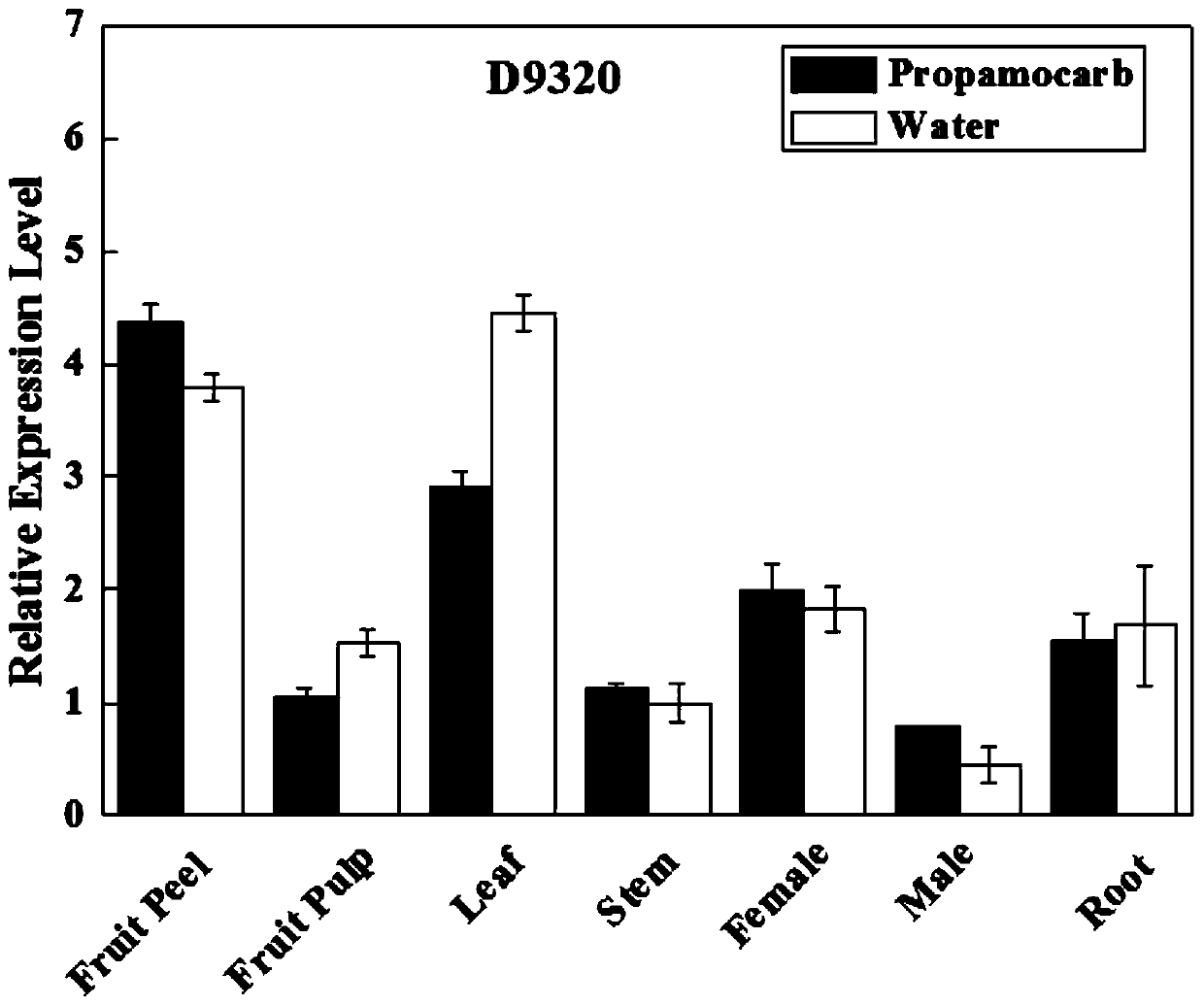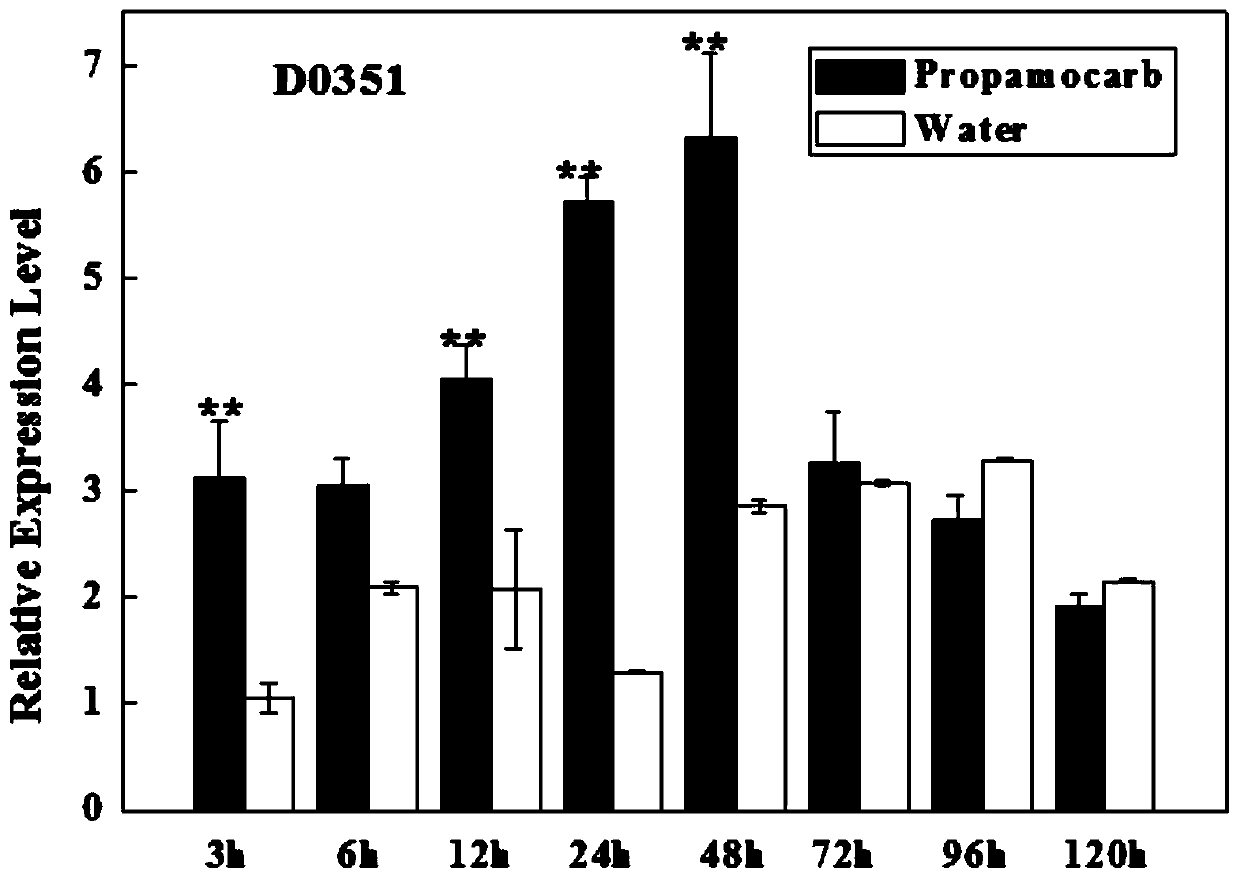Application of cucumis sativus CsHMGB gene in reducing pesticide residue and relieving pesticide toxicity
A pesticide residue and gene technology, applied in application, genetic engineering, plant genetic improvement, etc., can solve problems such as environmental pollution, endanger human health, and affect quality, and achieve the goal of avoiding environmental pollution, reducing pesticide residues, and improving safety and quality. Effect
- Summary
- Abstract
- Description
- Claims
- Application Information
AI Technical Summary
Problems solved by technology
Method used
Image
Examples
specific Embodiment approach 1
[0025] Embodiment 1: The application of the cucumber CsHMGB gene in reducing pesticide residues and alleviating pesticide toxicity in this embodiment.
[0026] The pesticide described in this embodiment is propamocarb.
[0027] In this embodiment, specific primers (CsHMGB-F: 5'ATGGAAATTATGGAACACAACAG-3', CsHMGB-R: 5'-TCAAGAGATGAAATCTAGAGAGTCA-3') are designed for PCR amplification.
[0028] PCR system: upstream primer (20 μmol L -1 ) 0.5 μL, downstream primer (20 μmol L -1 )0.5μL, 10×PCRBuffer 2μL (including 20mmol·L -1 Mg 2+ ), dNTPs (10mmol·L -1 ) 2 μL, Taq enzyme (2U) 0.2 μL, add ddH 2 0 to 20 μL.
[0029] PCR program: 94°C for 3min; 30 cycles of 94°C for 1min, 54°C for 1min, and 72°C for 1min; 72°C for 10min; store at 4°C.
[0030] Using the online NCBI (http: / / www.ncbi.nlm.nih.gov) database, the sequences homologous to CsHMGB were analyzed and obtained by BLAST alignment. The phylogenetic tree analysis was carried out using MEGA7 software. The phylogenetic tree wa...
Embodiment 1
[0034] Select cucumber low propamocarb residue line 'D0351' (0.014mg / kg) and cucumber high propamocarb residue line 'D9320' (0.171mg / kg) in this embodiment as test materials ('D0351' and 'D9320' Provided by the Cucumber Research Group of Northeast Agricultural University). In the autumn of 2017, the test materials were cultivated at the Horticultural Experiment Station of Northeast Agricultural University, using the conventional ridge cultivation method and unified management. When the melons are ripe at the tenth joint (harvesting stage, 34 days after planting), the plants are sprayed with 400 times of propamocarb hydrochloride solution, and water spray is used as a control, and the degree of spraying to the leaf margin and fruit drops is the degree. And at 3h, 6h, 9h, 12h, 24h, 36h, 48h, 72h, 96h and 120h, take the peels of the upper, middle and lower parts of the fruit and 2mm thick samples for mixing, quick-freeze in liquid nitrogen, and store at -80°C spare.
[0035] Pr...
Embodiment 2
[0041] Using the cloned full-length primers CsHMGBF and CsHMGBR, and using the CsHMGB open reading frame plasmid as a template, PCR was performed with Taq enzyme to obtain an overhang with A at the 3' end. Further, CsHMGB was ligated with pCXSN-1250 vector by T4 ligase (refer to the manual) to construct the overexpression vector pCXSN-CsHMGB(+).
[0042] The constructed sense and antisense expression vectors and empty vectors were respectively transformed into Agrobacterium tumefaciens LBA4404 by freeze-thaw method. Using the Agrobacterium-mediated genetic transformation technology of cucumber optimized by Wang et al., the cucumber cotyledon nodes of "infected cucumber line L18" were infected, and after co-cultivation, induced differentiation of adventitious buds, elongation of adventitious buds, rooting and domestication of regenerated plants , to obtain resistant individual plants. A concentration of 1 mg / L glufosinate was selected for screening resistant plants to obtain r...
PUM
 Login to View More
Login to View More Abstract
Description
Claims
Application Information
 Login to View More
Login to View More - R&D
- Intellectual Property
- Life Sciences
- Materials
- Tech Scout
- Unparalleled Data Quality
- Higher Quality Content
- 60% Fewer Hallucinations
Browse by: Latest US Patents, China's latest patents, Technical Efficacy Thesaurus, Application Domain, Technology Topic, Popular Technical Reports.
© 2025 PatSnap. All rights reserved.Legal|Privacy policy|Modern Slavery Act Transparency Statement|Sitemap|About US| Contact US: help@patsnap.com



